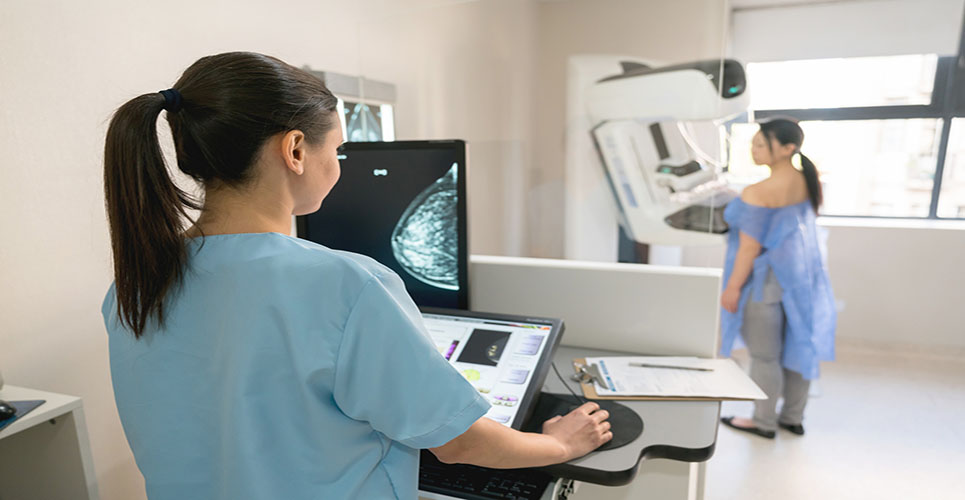The European Asymptomatic Screening Study (EASY) aimed to evaluate the impact of ABUS in conjunction with full field digital screening mammography (FFDSM) in 1,668 women aged 40-74 with dense breasts. The study showed a 571 percent relative increase in breast cancer detection in dense breast tissue, or 6.6 cancers detected per 1000 women screened, compared with 4.2 cancers per 1000 women for mammography alone. 2
The European Asymptomatic Screening Study (EASY) aimed to evaluate the impact of ABUS in conjunction with full field digital screening mammography (FFDSM) in 1,668 women aged 40-74 with dense breasts. The study showed a 571 percent relative increase in breast cancer detection in dense breast tissue, or 6.6 cancers detected per 1000 women screened, compared with 4.2 cancers per 1000 women for mammography alone. 2
“If ABUS were a part of national screening programs in dense breasts, more cancers could be detected at an earlier stage. Many countries are working to try to optimise screening so that each woman can get examinations according to her assessed risk,”said Dr Brigitte Wilczek, lead researcher on the ABUS study.
Dense breasts are particularly common in younger women and seems to reduce with age, as on average 74% of women in their 40s, 57% of women in their 50s, 44% of women in their 60s and 36% of women in their 70s have dense breast tissue.3
In the study, recently published in the European Journal of Radiology, the FFDSM was first used in the examination followed by a 3D ABUS exam which took 15 minutes to complete per patient. The inclusion criteria for the women in the study was that they be 40 years or older, asymptomatic, and have heterogeneously dense parenchyma or extremely dense breast on assessment by the radiographer in the screening.
“The study shows that it is feasible to implement 3D ABUS into a high volume mammography center and increase the cancer detection rate while maintaining an acceptable low recall rate,”said Dr Wilczek.
The recall rate for ABUS and FFDSM combined was only +0.9% compared to FFDSM alone. This is an acceptable low recall rate well within the recommendations of the European guidelines for quality assurance in breast cancer screening.4
The new generation of Automated Breast Ultrasound, the InveniaTM ABUS, will be presented at the European Society of Breast Imaging in Paris, September 23–24, 2016.
1 Wilczek, B., Wilczek, H. E., Rasouliyan, L. and Leifland, K. (2016). “Adding 3D automated breast ultrasound to mammography screening in women with heterogeneously and extremely dense breasts: Report from a hospital-based, high-volume, single-center breast cancer screening program”, European Journal of Radiology 85, 1554–1563.
2 Wilczek, B. et al., p. 1558.
3 Checka CM, Chun JE, Schnabel FR, Lee J, Toth H (2012). “The relationship of mammographic density and age: implications for breast cancer screening”. AJR AM J Roentgenol Mar; 198 (3): W292–5.
4 Wilczek, B. et al., p. 1558.

